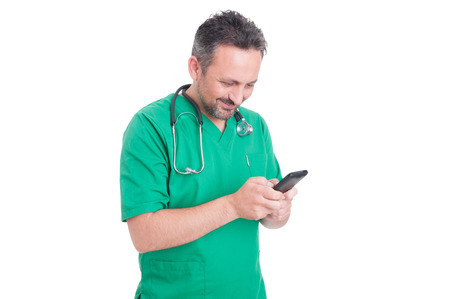
By now, virtually everybody interested in cosmetic plastic surgeryknows the importance of cell phone selfies: people take pictures of themselves, email the pictures around or post them in very public places like Facebook.
But in many cases, the person suffers the slings and arrows of snide remarks about a non-attractive appearance.
A cosmetic surgery consultation then follows to improve that ragged-on appearance.
(See some nose job before and after pictures.)
Now, writing in the Aesthetic Surgery Journal, an Ohio plastic surgeonat the Cleveland Clinic Foundation, has been asking his patients to send him selfies for medical reasons and a more convenient way to do after-surgery check-ups.
The very small study followed 52 patients of article author James E. Zins M.D., at the Cleveland Clinic.
The next morning after surgery, virtually all cosmetic plastic surgeons want to briefly see the patient.
(Read some happy remarks from other cosmetic surgery patients.)
Usually, surgeons are most interested in checking for after-surgery infections that reveal themselves via redness and other signs. Procedures with very long incisions – like tummy tuck or breast augmentation – worry surgeons the most. Common after-surgery concerns among patients are swelling and bruising.
Dr. Zins does a bit more than an after-surgery check. He phones his patients – as do many surgeons – to ask if recovery was going well.
Occasionally, a patient would send a cell phone photo of the rejuvenated area.
Inspired to save time for both himself and his patients, Dr. Zins started requiring patients to text him after leaving the recovery room. Then, the doctor wanted a selfie sent to him 48 to 72 hours after the procedure.
New York City plastic surgeon Darren Smith, M.D., uses cell phone check-ups a lot after breast augmentation. Dr. Smith says he often re-positions nipples and needs to check the morning after surgery that the nipple still has a healthy blood supply. Formerly, Dr. Smiths’ patients remained in the hospital overnight so the surgeon could check the patient the next morning.
Now, the patients send Dr. Smith a smart phone picture of the area. Other patients who wonder if their healing is progressing normally also send the surgeon pictures of the operated features.
(See some before & after face and neck lift pictures.)
(Virtually all surgeons say cell phone photos will never replace a personal exam. So, if there is something even slightly suspicious on the photo, the patient is called in for an in-person, hands on exam.)
Dr. Zins’ study of cell phone-using cosmetic surgery patients found that 96.2 of the study group were happy with the recovery process.
“Smartphones are a big win in plastic surgery, for patient and surgeon alike,” said Dr. Smith.

